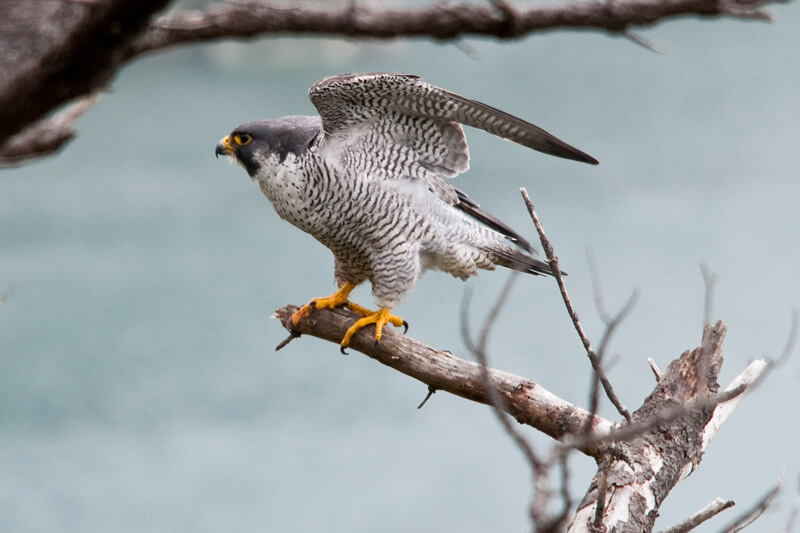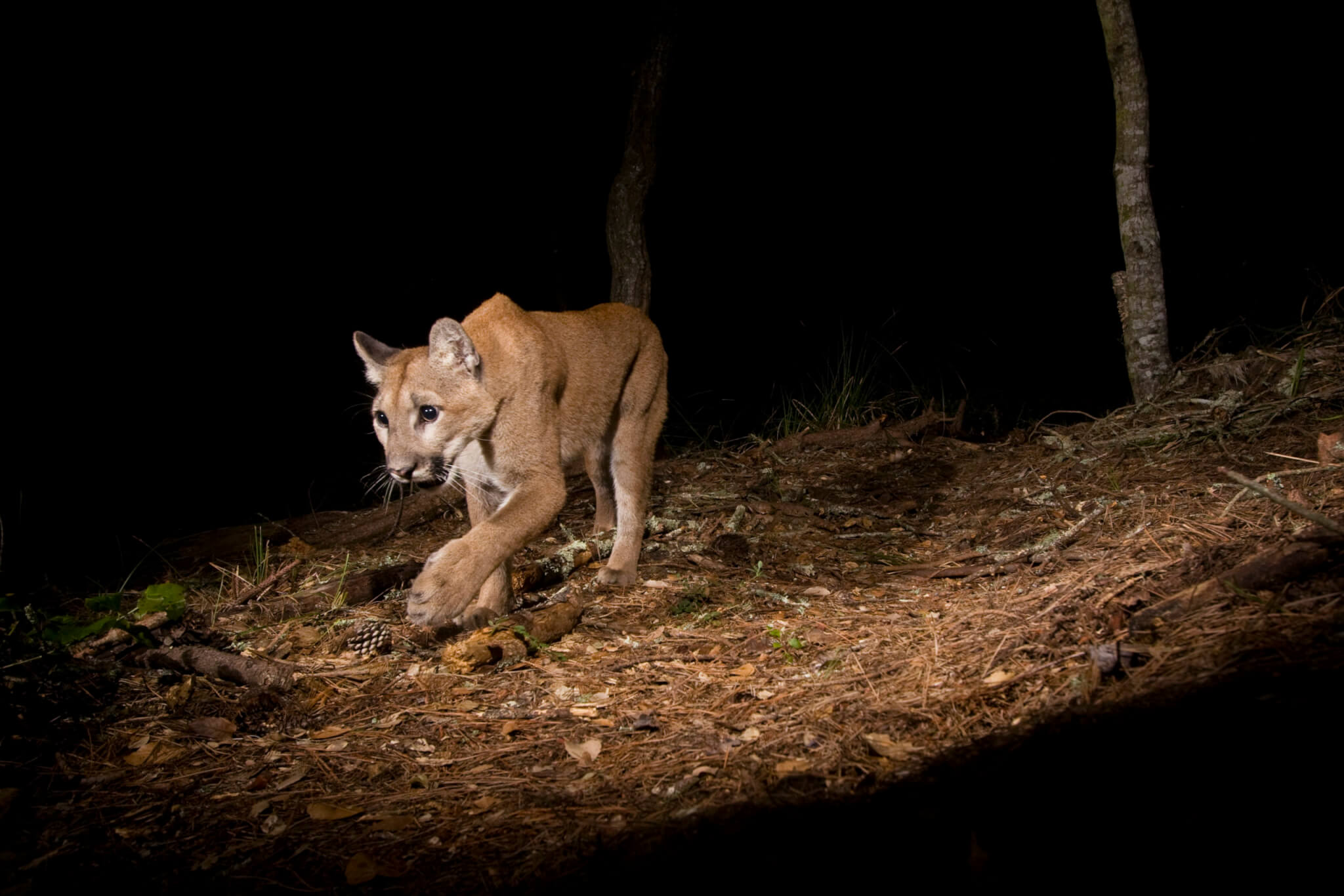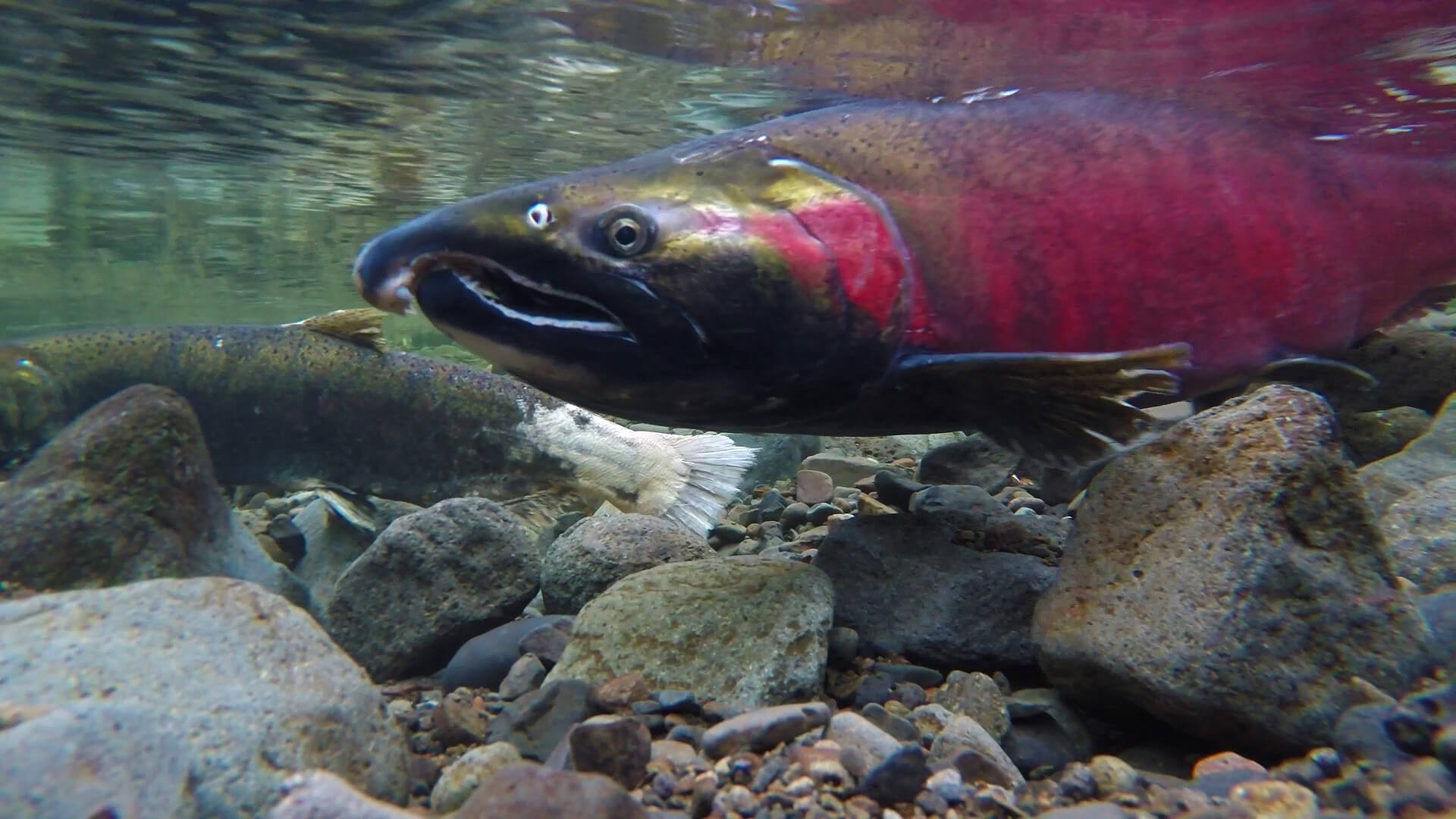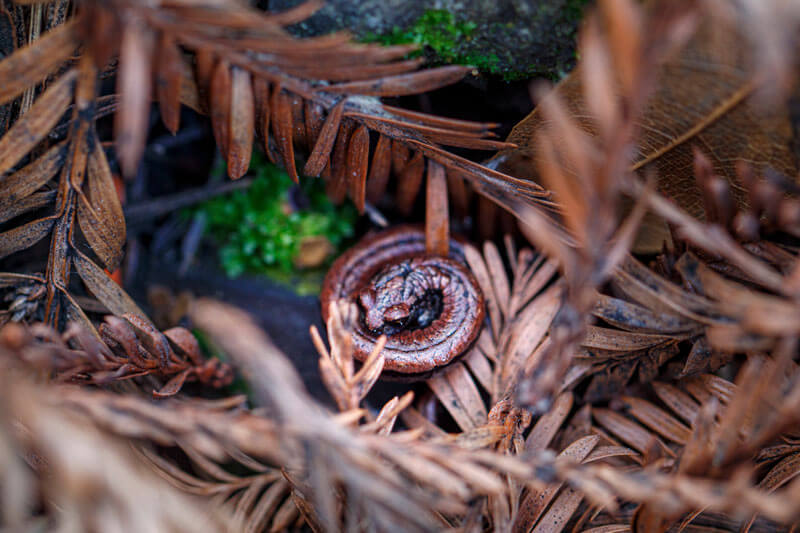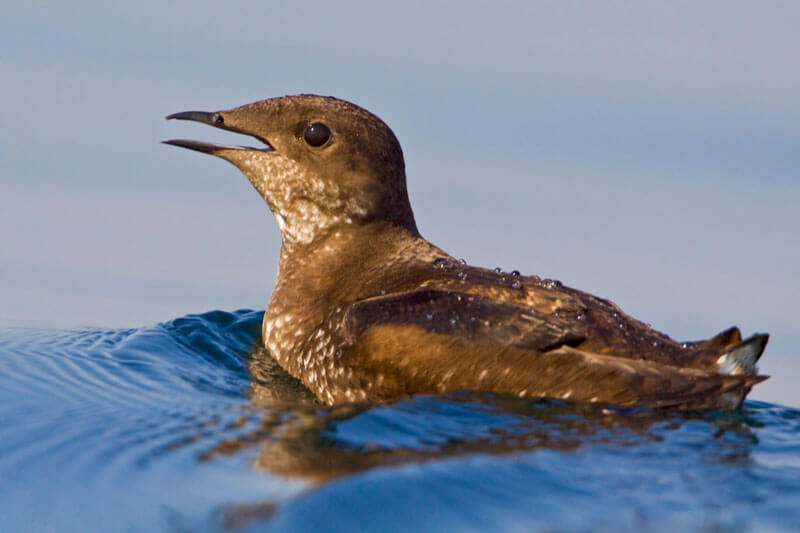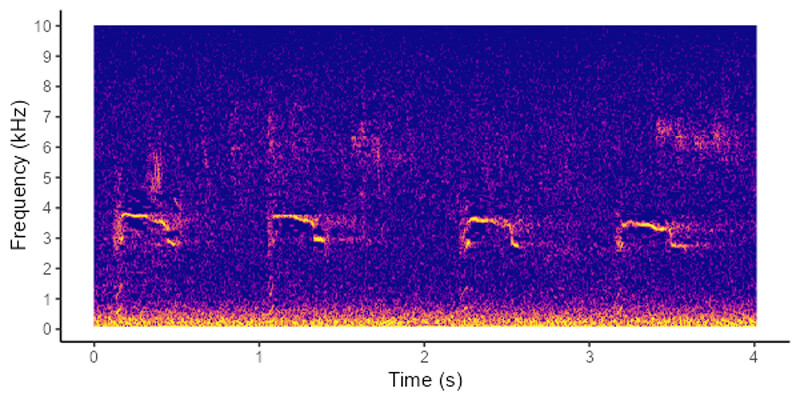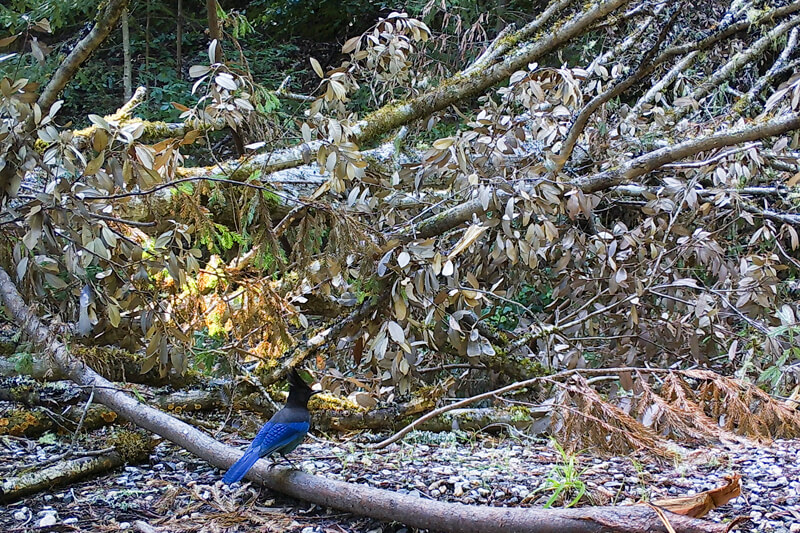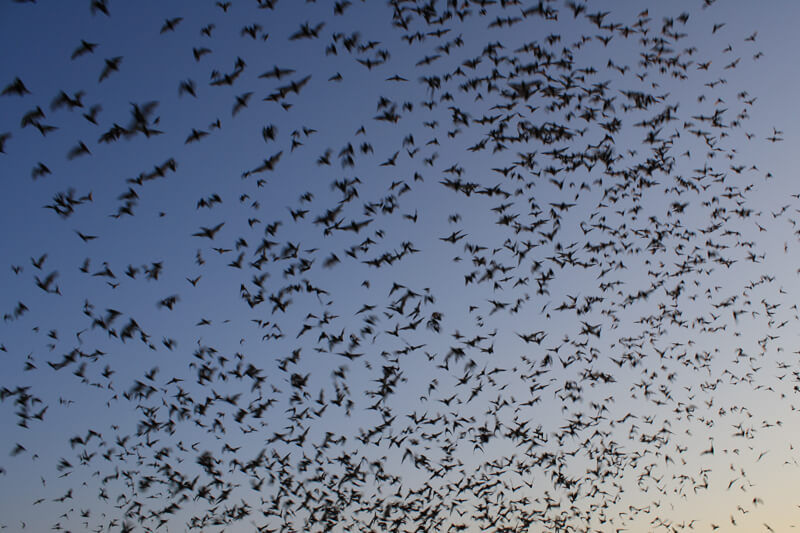Monitoring Wildlife for Healthy Forests
photo by Pathways for Wildlife
Why Wildlife?
Unlike statuesque and stationary redwoods, the wildlife they help provide habitat for can be rather difficult to see–whether they’re well-camouflaged, super speedy, ranging across huge habitats, seasonal, or prefer to move under the cover of darkness. Monitoring wildlife can help to assess overall ecosystem health and give us a sense of what species are using different parts of the property, so we can plan projects as needed, coordinate with researchers, and assess areas and seasons to reduce use. Although wildlife often shy away from people, science has developed many ways to uncover the presence of wildlife on the land, in the water, and in the air.
End of the Range
The Santa Cruz mountains are close to the end of the range for redwoods, endangered coho salmon, and endangered marbled murrelets. This southernmost habitat marks the edge of favorable conditions like temperature and precipitation that these species need. And of course, climate change is pushing those temperatures higher and pushing the water cycle further into extreme undulations between drought and deluge. Monitoring these species here in the Santa Cruz mountains can not only give us invaluable data for the species as a whole but also inform adaptive management stewardship strategies.
Multifaceted partnerships with experts help to gather and analyze data to guide whether action is needed to better restore the natural processes altered by recent human impacts such as clear-cut logging, damming, and the introduction of invasive species.
“Protecting wildlife that are there is a part of our goal. Understanding where they are, what they are doing, and when helps us to manage the land holistically,” our Natural Resource Manager Beatrix Jiménez-Helsley explains. We monitor wildlife across our protected lands but San Vicente Redwoods has been a research hotspot–a living laboratory for field studies–for over a decade and with the upcoming opening of its new trails, we’re poised to learn even more.
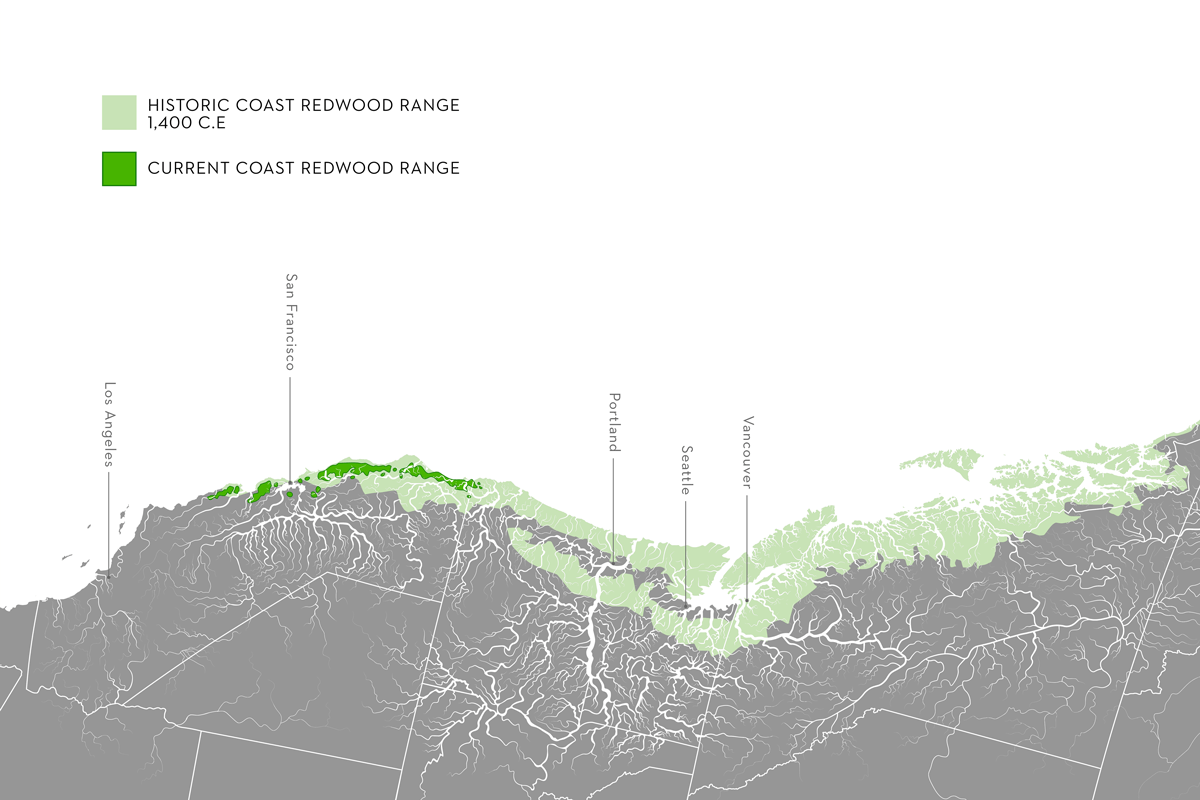
illustration by Ink Dwell.
San Vicente Redwoods
San Vicente Redwoods was protected in 2011 as a dynamic partnership with Peninsula Open Space Trust, Save the Redwoods League, and the Land Trust of Santa Cruz County. Since then, San Vicente Redwoods’ nearly 9,000 acres including old-growth redwoods, oak woodlands, grasslands, and eight creeks have hosted a plethora of research from geomorphology studies on its unique karst systems underground to the many species that soar, roost, or nest in the redwood crowns and cliffs above. Countless things make San Vicente Redwoods extraordinary but with the partnerships’ plans to open San Vicente Redwoods for public recreation, being able to monitor wildlife before and after it opens is extremely valuable data.
Through various research approaches to wildlife monitoring, we are able to get a glimpse behind the curtain at the creatures in the land, water, and air.
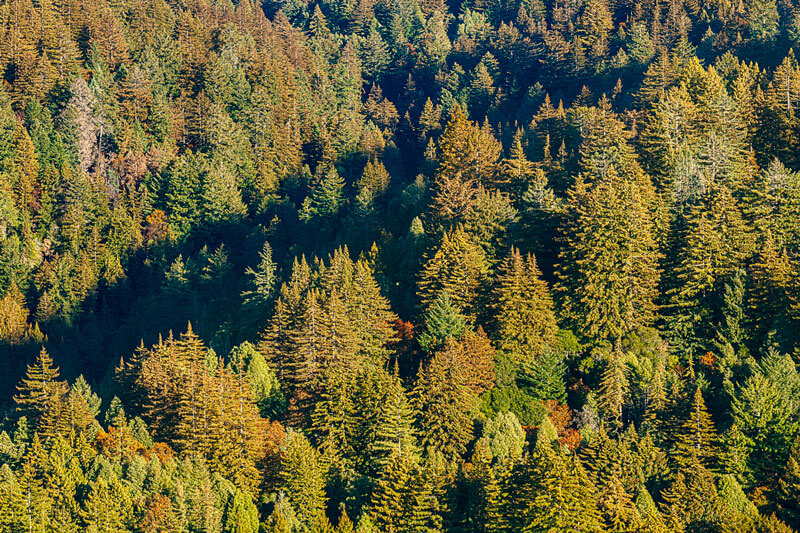
photo by Ian Bornarth.
photo by Ian Rowbotham.
Click a topic below to learn more about monitoring wildlife on the land:
As our communities grow and habitat becomes less and less available, ensuring our time in nature has as little impact as possible on wildlife is paramount. Monitoring wildlife on our properties can help us adapt management plans based on the actual behaviors and needs of wildlife.
Wildlife Photo Index
In 2019, wildlife monitoring equipment was strategically deployed across San Vicente Redwoods to gather baseline data on how wildlife actually use the land. Motion sensor cameras positioned in key areas to capture wildlife presence and behavior have returned a treasure trove of data–as well as pretty fantastic wildlife selfies. Here are our Top 12 shots of wildlife at San Vicente Redwoods so far:
Wildlife monitoring photos with our San Vicente Redwoods partners Peninsula Open Space Trust, Save the Redwoods League, and Land Trust of Santa Cruz County by Pathways for Wildlife.
Click below to learn more about the next steps in monitoring wildlife on the land:
Motion sensor cameras have truly increased our ability to detect wildlife on the land we would rarely see otherwise. But what about wildlife in the water or air? Especially for species that are already rare to begin with?
photo by Ian Bornarth.
Click a topic below to learn more about monitoring wildlife in the water:
These varied approaches to monitoring aquatic wildlife help to provide a picture of all the species currently present–those we can see and even those we can’t through evidence left in the water. In a similar regard, monitoring wildlife in the air, particularly notoriously mysterious species, can be accomplished through evidence in the air.
photo by Canopy Dynamics.
Click below to learn more about the next steps in monitoring wildlife in the air:
Sensitive Species, Significant Signs
The presence of marbled murrelets and coho salmon–two sensitive species–after the CZU wildfire are encouraging signs for the continued recovery of the forest, although populations fluctuate naturally and many other factors can come into play that can affect wildlife species. For marbled murrelets and coho salmon in particular, these endangered species rely on two different habitats which doubles the potential impacts from human activity such as oil spills and dams as well as greater shifts from climate change. Monitoring and collaborating with experts and landowners across the region helps to provide the bigger picture of the species as a whole and the potential for coordinating adaptive management across a greater swath of the range, hopefully benefitting more coho, marbled murrelets, and many more species in the Santa Cruz Mountains.
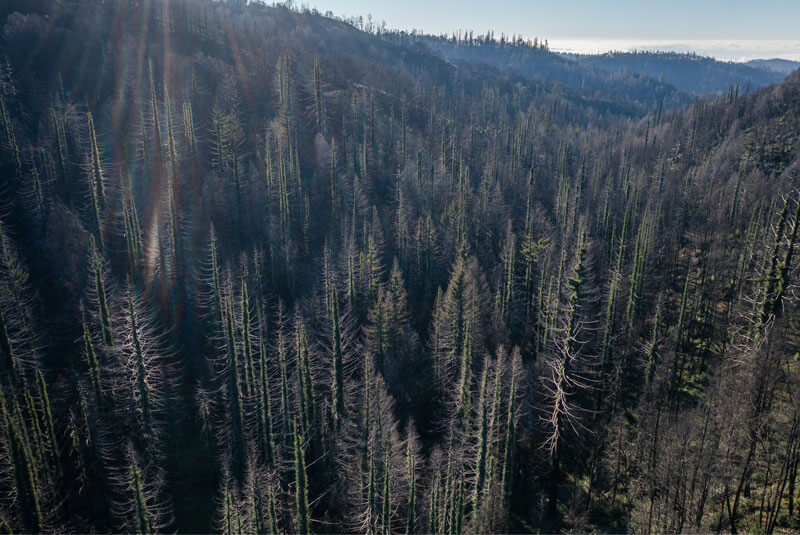
photo by Teddy Miller.
Monitoring and Management
During the next few years of monitoring, we will gain a better understanding of the wildlife that inhabit San Vicente Redwoods and will be able to see if the presence of people significantly impacts wildlife’s behavior or movement in the forest and how we can minimize the effects. With adaptive land management and data on what species use areas at different times, projects can be scheduled when they will affect less wildlife and can be added opportunistically to support specific wildlife like Large Woody Debris installations for coho salmon. Wildlife monitoring has ever-growing potential to help balance needs in the San Vicente Redwoods through adaptive land management. Thanks to our partners, The Arthur L. and Elaine V. Johnson Foundation, The William H. and Mattie Wattis Harris Foundation, Resource Legacy Fund, and supporters like you, these invaluable projects can inform future trails, land management, and a deeper regional understanding of how land can be shared by people and wildlife for generations to come.
More to Explore
- Learn more about Redwoods, Pumas, and People
- Read more about restoring Mill Creek for coho salmon
- Watch The Marvels and Mystery of the Marbled Murrelet with Portia Halbert
